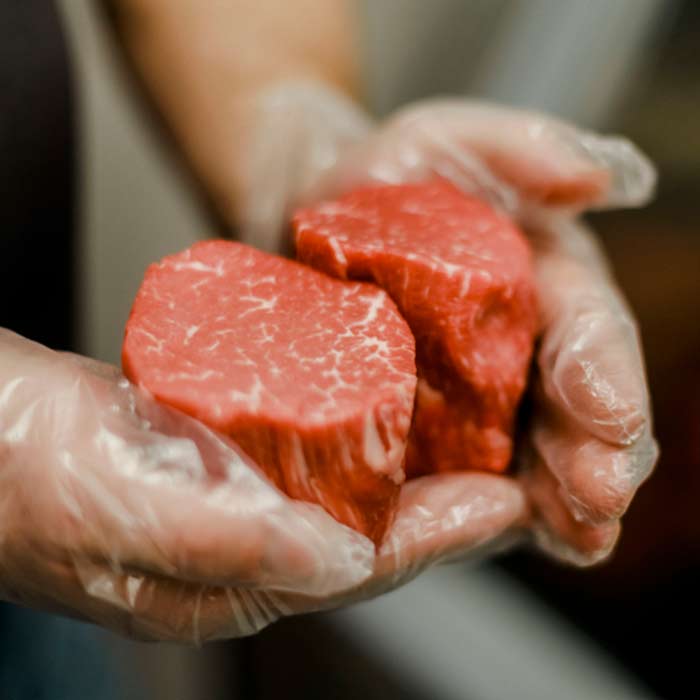Get the very best Bargains on Fresh Meat at Bagley Farms Meat Market Edwardsville IL
Get the very best Bargains on Fresh Meat at Bagley Farms Meat Market Edwardsville IL
Blog Article
Discover the Art of the Butcher's Cut in a Modern Meat Market
In the ever-evolving landscape of modern meat markets, the butcher's cut has actually transcended its typical origins, merging olden workmanship with contemporary practices. What really sets the contemporary butcher apart is their capability to forge a much deeper link between consumers and the beginnings of their meat.
Evolution of Butchery Techniques

The mid-20th century saw butchery strategies further fine-tuned by scientific insights right into muscle mass biology and meat aging, improving both inflammation and preference. Innovations like vacuum cleaner packaging and refrigeration prolonged item shelf-life, allowing butchers to branch out offerings and boost top quality control. This duration additionally marked the rise of specific equipment, such as band saws and meat slicers, which increased precision and efficiency in meat processing.
The 21st century has presented digital innovation right into the butchery world. Digital systems currently help in tracking pet provenance and maximizing cuts to meet specific client choices. Additionally, a renewal in artisanal butchery has arised, blending typical abilities with modern knowledge to deal with customers looking for ethical and sustainable meat options. This evolution highlights a dynamic interplay between practice and development, conference contemporary needs while maintaining the craft's heritage.

Recognizing Meat Cuts

Recognizing the details of meat cuts is essential for both butchers and customers seeking quality and worth. For butchers, exact cuts show ability and respect for the craft, making sure marginal waste and ideal return.
The main categories of meat cuts include primal, sub-primal, and retail cuts. Butchers after that damage these down better into sub-primal cuts, prior to finally generating retail cuts available to customers, like ribeye or tenderloin.
Recognizing muscle mass composition is essential; muscles made use of extra regularly by the animal tend to be tougher and are best matched for slow cooking techniques, while less-used muscular tissues, like those located in the loin, are much more tender and ideal for cooking or roasting. Familiarity with these differences empowers consumers to make enlightened selections, improving their cooking undertakings.
Selecting Quality Meat
Choosing the best meat involves greater than simply selecting a visually attractive piece from the screen. The art of selecting high quality meat requires a discerning eye and knowledge of certain features that signify quality and excellence. To start with, take notice of the shade; beef should have a bright, cherry-red shade, while lamb needs to exhibit a soft pink tone, and pork a light pink. This shows the meat is fresh and hasn't been exposed to oxygen for too long.
Second of all, take into consideration the marbling, which describes the white streaks of fat within the muscle mass. Proper marbling is a crucial indication of tenderness and flavor, as it melts during cooking, enhancing the meat's juiciness. Bear in mind, greater marbling often associates with exceptional top quality cuts, such as USDA Prime.
Texture is another critical element; meat ought to feel strong to the touch, not slimy or extremely soft. Additionally, bear in mind the scent. Fresh meat must have a clean, neutral scent, devoid of any type of sour or repulsive smells.
Combining Cuts With Cooking Techniques
Efficiently coupling cuts of meat with the suitable cooking techniques is important for attaining optimal flavor and appearance. Various cuts differ in Find Out More tenderness, marbling, and connective cells Bonuses web content, each requiring particular techniques to open their capacity. As an example, tender cuts like filet mignon and ribeye, with their intrinsic marbling, take advantage of high-heat, quick-cooking techniques such as barbecuing or pan-searing. These techniques enhance the meat's natural flavors and make sure a juicy surface.
Alternatively, harder cuts like brisket and chuck roast are abundant in collagen, which damages down into jelly when cooked gradually. These cuts are perfect for braising or slow roasting, allowing the meat to tenderize with time and develop deep, complex flavors. Cuts such as brief ribs and pork shoulder make out well with slow-cooking methods, where prolonged cooking times transform their robust structures into delicious dishes.
Lamb shanks and oxtail, which need long term food preparation to tenderize, are excellent prospects for cooking or sluggish simmering. These techniques coax out rich, passionate flavors while preserving wetness. By recognizing the distinct qualities of each cut, cooks and home cooks alike can raise their cooking developments, making sure each dish is both satisfying and remarkable.
The Butcher's Role Today
Navigating the advancing landscape of the modern-day meat market, the butcher's duty today expands past mere prep work of cuts. Contemporary butchers are cooking artisans, instructors, and supporters for lasting techniques.
Along with crafting exact cuts, butchers now involve directly with customers, providing cooking suggestions and tailoring choices to suit specific requirements and choices. Their proficiency in meat aging, marbling, and flavor accounts empowers customers to make educated decisions, improving their culinary experiences. This customized solution exhibits the butcher's advancing duty as a relied on expert in the kitchen.
Moreover, butchers are critical in lessening waste, making use of entire pets to create diverse items such as sausages and stocks - bagley farms meat Recommended Site market edwardsville il. This comprehensive approach not only appreciates the pet yet also lines up with contemporary sustainability objectives. In this method, the contemporary butcher symbolizes both custom and innovation, adapting to an ever-changing market while maintaining the virtuosity and stability of their craft

Final Thought
Proficiency in understanding diverse meat cuts and quality indications empowers butchers to supply enlightened recommendations, straightening specific cuts with ideal cooking techniques. By honoring historic practices while welcoming contemporary demands, the butcher's role continues to be important in today's sophisticated meat market.
Report this page